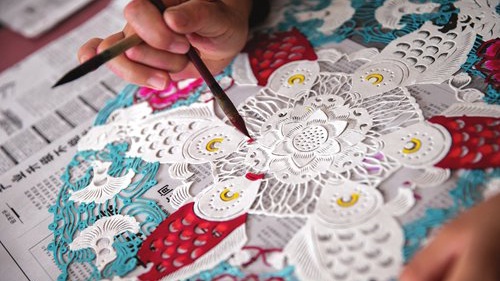
In addition to the beautiful landscape, Zhangjiakou has been cultivated by its history and natural resources. Formerly known as Kalgan, the area has a history dating back thousands of years and was the main caravan route from Beijing to Inner Mongolia and beyond.
Zhangjiakou is also home to Yu county, which is the hometown of ancient traditions such as folk art and Chinese paper-cut art. As you are led into the restored villages, you take a glimpse into the ancient cultural arts of the past. Spectators were able to view the practice of paper cutting first hand and learn the techniques and history of this treasured art form. In addition, guests were invited to try their hand at paper cutting and painting in the classic styles from the past. In the display rooms, intricate paper cuttings were viewed, allowing visitors to take a journey through time and see the fruits of labor through paper cutting throughout the years.
The area is also known for its abundance of natural resources including millet, grains and mung bean. The mung bean is used to make a delicious smoked tofu that is specific to the region. In addition, the area also features many wineries. There were a wide array of wines and food samplings that were local to the region displayed throughout the city at each tourist location. The city is also known for apricot trees, fruits and seeds. The fruit and seeds from the apricot trees are a delicious and healthy snack that was enjoyed by many during the event.



